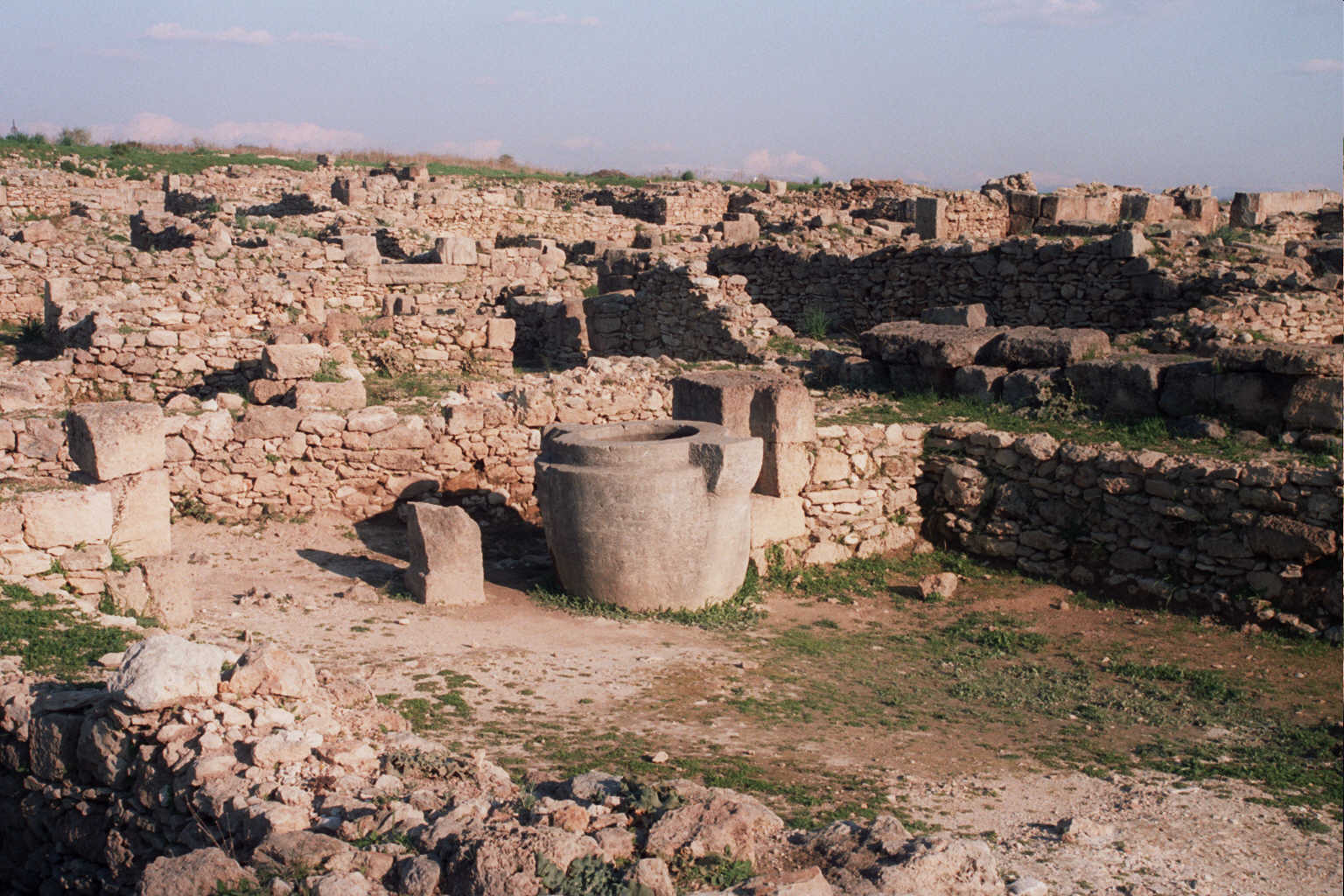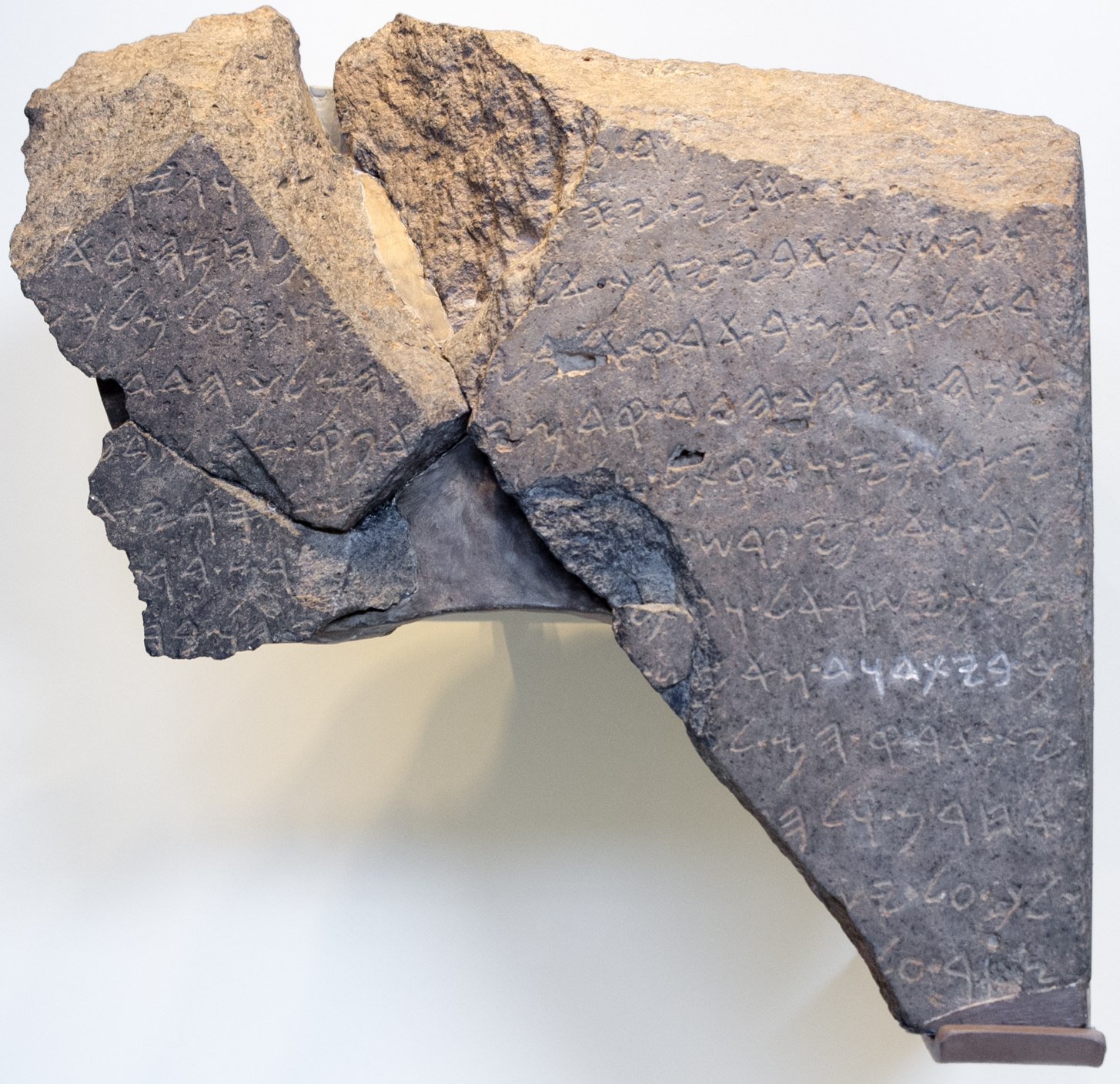|
Yahwism
Yahwism, also known as the Israelite religion, was the ancient Semitic religion of ancient Israel and Judah and the ethnic religion of the Israelites. The Israelite religion was a derivative of the Canaanite religion and a polytheistic religion that had a pantheon with various gods and goddesses. The primary deity of the religion and the head of the pantheon was Yahweh, the national god of the kingdoms of Judah and Israel. The majority of scholars hold that the goddess Asherah was the consort of Yahweh, though some scholars disagree. Following this divine duo were second-tier gods and goddesses, such as Baal, Shamash, Yarikh, Mot, and Astarte, with each having priests and prophets, and numbering royalty among their devotees. The practices of Yahwism included festivals, ritual sacrifices, vow-making, private rituals, and the religious adjudication of legal disputes. For most of its history, the Temple in Jerusalem was not the sole or central place of worship dedic ... [...More Info...] [...Related Items...] OR: [Wikipedia] [Google] [Baidu] |
Yahweh
Yahweh was an Ancient Semitic religion, ancient Semitic deity of Weather god, weather and List of war deities, war in the History of the ancient Levant, ancient Levant, the national god of the kingdoms of Kingdom of Judah, Judah and Kingdom of Israel (Samaria), Israel, and the king of the gods, head of the Pantheon (religion), pantheon of the Polytheism, polytheistic Yahwism, Israelite religion. Although there is no clear consensus regarding the geographical origins of the deity, scholars generally hold that Yahweh was associated with Mount Seir, Seir, Edom, Desert of Paran, Paran, and Teman (Edom), Teman, and later with Canaan. The worship of the deity reaches back to at least the early Iron Age, and likely to the late Bronze Age, if not somewhat earlier. In the oldest Bible, biblical texts, Yahweh possesses attributes that were typically ascribed to deities of weather and war, fructifying the Land of Israel and leading a Heavenly host#Hebrew Bible, heavenly army against the ... [...More Info...] [...Related Items...] OR: [Wikipedia] [Google] [Baidu] |
Israelites
Israelites were a Hebrew language, Hebrew-speaking ethnoreligious group, consisting of tribes that lived in Canaan during the Iron Age. Modern scholarship describes the Israelites as emerging from indigenous Canaanites, Canaanite populations and other peoples.Mark Smith in "The Early History of God: Yahweh and Other Deities of Ancient Israel" states "Despite the long regnant model that the Canaanites and Israelites were people of fundamentally different culture, archaeological data now casts doubt on this view. The material culture of the region exhibits numerous common points between Israelites and Canaanites in the Iron I period (c. 1200–1000 BCE). The record would suggest that the Israelite culture largely overlapped with and derived from Canaanite culture ... In short, Israelite culture was largely Canaanite in nature. Given the information available, one cannot maintain a radical cultural separation between Canaanites and Israelites for the Iron I period." (pp. ... [...More Info...] [...Related Items...] OR: [Wikipedia] [Google] [Baidu] |
National God
A national god or tribal god is a guardian deity whose special concern is supposed to be the safety and well-being of an 'ethnic group' (''nation''). This is contrasted with other guardian figures such as family gods responsible for the well-being of individual clans or professions, or personal gods who are responsible for the well-being of individuals. Ancient gods In antiquity (and to some extent continuing today), religion was a characteristic of regional culture, together with language, customs, traditions, etc. Many of these ethnic religions included national god(s) in their pantheons, such as * Amaterasu of the Japanese; * Amun, Amun-Ra and Horus for the Egyptians; * Apollo for the people of Troy; * Aramazd for Armenians; * eponymous Assur for the Assyrians; * Ashtoret for the Sidonians; * the eponymous Athena-Mykene for the Athenians and Mycenaeans; * Baal for the Phoenicians; * Bathala of the Tagalogs; * Chemosh for the Moabites; * Dagon for Philistia; * Gaut for ... [...More Info...] [...Related Items...] OR: [Wikipedia] [Google] [Baidu] |
History Of Ancient Israel And Judah
The history of ancient Israel and Judah spans from the early appearance of the Israelites in Canaan's hill country during the late second millennium BCE, to the establishment and subsequent downfall of the two Israelite kingdoms in the mid-first millennium BCE. This history unfolds within the Southern Levant during the Iron Age. The earliest documented mention of "Israel" as a people appears on the Merneptah Stele, an ancient Egyptian inscription dating back to around 1208 BCE. Archaeological evidence suggests that ancient Israelite culture evolved from the pre-existing Canaanite civilization. During the Iron Age II period, two Israelite kingdoms emerged, covering much of Canaan: the Kingdom of Israel in the north and the Kingdom of Judah in the south. According to the Hebrew Bible, a " United Monarchy" consisting of Israel and Judah existed as early as the 11th century BCE, under the reigns of Saul, David, and Solomon; the great kingdom later was separated into tw ... [...More Info...] [...Related Items...] OR: [Wikipedia] [Google] [Baidu] |
Canaanite Religion
Canaanite religion or Syro-Canaanite religions refers to the myths, cults and ritual practices of people in the Levant during roughly the first three millennia BC. Canaanite religions were polytheistic and in some cases monolatristic. They were influenced by neighboring cultures, particularly ancient Egyptian and Mesopotamian religious practices. The pantheon was headed by the god El and his consort Asherah, with other significant deities including Baal, Anat, Astarte, and Dagon. Canaanite religious practices included animal sacrifice, veneration of the dead, and the worship of deities through shrines and sacred groves. The religion also featured a complex mythology, including stories of divine battles and cycles of death and rebirth. Archaeological evidence, particularly from sites like Ugarit, and literary sources, including the Ugaritic texts and the Hebrew Bible, have provided most of the current knowledge about Canaanite religion. Sources and history Knowledge ... [...More Info...] [...Related Items...] OR: [Wikipedia] [Google] [Baidu] |
Solomon's Temple
Solomon's Temple, also known as the First Temple (), was a biblical Temple in Jerusalem believed to have existed between the 10th and 6th centuries Common Era, BCE. Its description is largely based on narratives in the Hebrew Bible, in which it was commissioned by biblical king Solomon before being destroyed during the Siege of Jerusalem (587 BC), Siege of Jerusalem by Nebuchadnezzar II of the Neo-Babylonian Empire in 587 BCE. No excavations are allowed on the Temple Mount, and no positively identified remains of the destroyed temple have been found. Most modern scholars agree that the First Temple existed on the Temple Mount in Jerusalem by the time of the Babylonian siege, and there is significant debate among scholars over the date of its construction and the identity of its builder. The Hebrew Bible, specifically within the Books of Kings, Book of Kings, includes a detailed narrative about the construction's ordering by Solomon, the penultimate ruler of the Kingdom of Israel ... [...More Info...] [...Related Items...] OR: [Wikipedia] [Google] [Baidu] |
Judaism
Judaism () is an Abrahamic religions, Abrahamic, Monotheism, monotheistic, ethnic religion that comprises the collective spiritual, cultural, and legal traditions of the Jews, Jewish people. Religious Jews regard Judaism as their means of observing the Mosaic covenant, which they believe was established between God in Judaism, God and the Jewish people. The religion is considered one of the earliest monotheistic religions. Jewish religious doctrine encompasses a wide body of texts, practices, theological positions, and forms of organization. Among Judaism's core texts is the Torah—the first five books of the Hebrew Bible—and a collection of ancient Hebrew scriptures. The Tanakh, known in English as the Hebrew Bible, has the same books as Protestant Christianity's Old Testament, with some differences in order and content. In addition to the original written scripture, the supplemental Oral Torah is represented by later texts, such as the Midrash and the Talmud. The Hebrew ... [...More Info...] [...Related Items...] OR: [Wikipedia] [Google] [Baidu] |
Kingdom Of Israel (Samaria)
The Kingdom of Israel ( ), also called the Northern Kingdom or the Kingdom of Samaria, was an History of ancient Israel and Judah, Israelite kingdom that existed in the Southern Levant during the Iron Age. Its beginnings date back to the first half of the 10th century BCE. It controlled the areas of Samaria, Galilee and parts of Transjordan (region), Transjordan; the former two regions underwent a period in which a large number of new settlements were established shortly after the kingdom came into existence. It had four capital cities in succession: Shiloh (biblical city), Shiloh, Shechem, Tirzah (ancient city), Tirzah, and the Samaria (ancient city), city of Samaria. In the 9th century BCE, it was ruled by the Omrides, Omride dynasty, whose political centre was the city of Samaria. According to the Hebrew Bible, the territory of the Twelve Tribes of Israel was once amalgamated under a Kingdom of Israel (united monarchy), Kingdom of Israel and Judah, which was ruled by the Ho ... [...More Info...] [...Related Items...] OR: [Wikipedia] [Google] [Baidu] |
Samaritanism
Samaritanism (; ) is an Abrahamic monotheistic ethnic religion. It comprises the collective spiritual, cultural, and legal traditions of the Samaritan people, who originate from the Hebrews and Israelites and began to emerge as a relatively distinct group after the Kingdom of Israel was conquered by the Neo-Assyrian Empire during the Iron Age. Central to the faith is the Samaritan Pentateuch, which Samaritans believe is the original and unchanged version of the Torah. Although it developed alongside and is closely related to Judaism, Samaritanism asserts itself as the truly preserved form of the monotheistic faith that the Israelites adopted under Moses. Samaritan belief also holds that the Israelites' original holy site was Mount Gerizim, near Nablus, and that Jerusalem only attained importance under Israelite dissenters who had followed Eli to the city of Shiloh; the Israelites who remained at Mount Gerizim would become the Samaritans in the Kingdom of Israel, wherea ... [...More Info...] [...Related Items...] OR: [Wikipedia] [Google] [Baidu] |
Kingdom Of Judah
The Kingdom of Judah was an Israelites, Israelite kingdom of the Southern Levant during the Iron Age. Centered in the highlands to the west of the Dead Sea, the kingdom's capital was Jerusalem. It was ruled by the Davidic line for four centuries. Jews are named after Judah, and primarily descend from people who lived in the region. The Hebrew Bible depicts the Kingdom of Judah as one of the two successor states of the Kingdom of Israel (united monarchy), United Kingdom of Israel, a term denoting the united monarchy under biblical kings Saul, David, and Solomon and covering the territory of Judah and Kingdom of Israel (Samaria), Israel. However, during the 1980s, Biblical minimalism, some biblical scholars began to argue that the archaeological evidence for an extensive kingdom before the late 8th century BCE is too weak, and that the methodology used to obtain the evidence is flawed. In the 10th and early 9th centuries BCE, the territory of Judah might have been limited ... [...More Info...] [...Related Items...] OR: [Wikipedia] [Google] [Baidu] |
Henotheism
Henotheism is the worship of a single, supreme god that does not deny the existence or possible existence of other deities that may be worshipped. Friedrich Schelling (1775–1854) coined the word, and Friedrich Welcker (1784–1868) used it to depict primitive monotheism among ancient Greeks. Max Müller (1823–1900), a British philologist and orientalist, brought the term into wider usage in his scholarship on the Indian religions, particularly Hinduism, whose scriptures mention and praise numerous deities as if they are one ultimate unitary divine essence. Müller made the term central to his criticism of Western theological and religious exceptionalism (relative to Eastern religions), focusing on a cultural dogma which held "monotheism" to be both fundamentally well-defined and inherently superior to differing concepts of God. Definition and terminology Friedrich Schelling coined the German term and German 'theism' (which comes ). The term refers to a fo ... [...More Info...] [...Related Items...] OR: [Wikipedia] [Google] [Baidu] |
Deity
A deity or god is a supernatural being considered to be sacred and worthy of worship due to having authority over some aspect of the universe and/or life. The ''Oxford Dictionary of English'' defines ''deity'' as a God (male deity), god or goddess, or anything revered as divine. C. Scott Littleton defines a deity as "a being with powers greater than those of ordinary humans, but who interacts with humans, positively or negatively, in ways that carry humans to new Higher consciousness, levels of consciousness, beyond the grounded preoccupations of ordinary life". Religions can be categorized by how many deities they worship. Monotheism, Monotheistic religions accept only one deity (predominantly referred to as "God"), whereas Polytheism, polytheistic religions accept multiple deities. Henotheism, Henotheistic religions accept one God, supreme deity without denying other deities, considering them as aspects of the same divine principle. Nontheistic religions deny any supreme eter ... [...More Info...] [...Related Items...] OR: [Wikipedia] [Google] [Baidu] |








